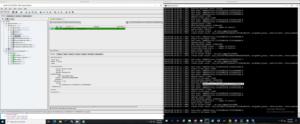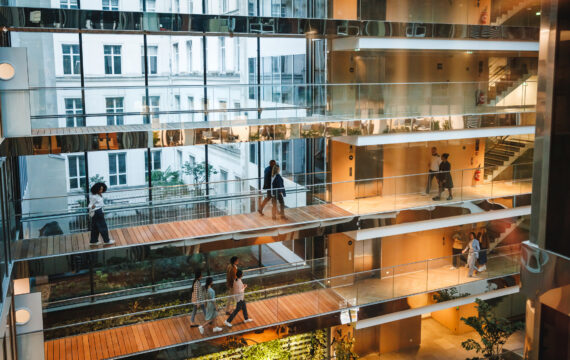Get Appointment
- contact@wellinor.com
- +(123)-456-7890
Blog & Insights
- Home
- Blog & Insights
WP_Query Object
(
[query] => Array
(
[post_type] => post
[showposts] => 8
[orderby] => Array
(
[date] => desc
) [autosort] => 0
[paged] => 0
[post__not_in] => Array
(
[0] => 5177
) ) [query_vars] => Array
(
[post_type] => post
[showposts] => 8
[orderby] => Array
(
[date] => desc
) [autosort] => 0
[paged] => 0
[post__not_in] => Array
(
[0] => 5177
) [error] =>
[m] =>
[p] => 0
[post_parent] =>
[subpost] =>
[subpost_id] =>
[attachment] =>
[attachment_id] => 0
[name] =>
[pagename] =>
[page_id] => 0
[second] =>
[minute] =>
[hour] =>
[day] => 0
[monthnum] => 0
[year] => 0
[w] => 0
[category_name] =>
[tag] =>
[cat] =>
[tag_id] =>
[author] =>
[author_name] =>
[feed] =>
[tb] =>
[meta_key] =>
[meta_value] =>
[preview] =>
[s] =>
[sentence] =>
[title] =>
[fields] => all
[menu_order] =>
[embed] =>
[category__in] => Array
(
) [category__not_in] => Array
(
) [category__and] => Array
(
) [post__in] => Array
(
) [post_name__in] => Array
(
) [tag__in] => Array
(
) [tag__not_in] => Array
(
) [tag__and] => Array
(
) [tag_slug__in] => Array
(
) [tag_slug__and] => Array
(
) [post_parent__in] => Array
(
) [post_parent__not_in] => Array
(
) [author__in] => Array
(
) [author__not_in] => Array
(
) [search_columns] => Array
(
) [ignore_sticky_posts] =>
[suppress_filters] =>
[cache_results] => 1
[update_post_term_cache] => 1
[update_menu_item_cache] =>
[lazy_load_term_meta] => 1
[update_post_meta_cache] => 1
[posts_per_page] => 8
[nopaging] =>
[comments_per_page] => 50
[no_found_rows] =>
[order] => DESC
) [tax_query] => WP_Tax_Query Object
(
[queries] => Array
(
) [relation] => AND
[table_aliases:protected] => Array
(
) [queried_terms] => Array
(
) [primary_table] => wp_posts
[primary_id_column] => ID
) [meta_query] => WP_Meta_Query Object
(
[queries] => Array
(
) [relation] =>
[meta_table] =>
[meta_id_column] =>
[primary_table] =>
[primary_id_column] =>
[table_aliases:protected] => Array
(
) [clauses:protected] => Array
(
) [has_or_relation:protected] =>
) [date_query] =>
[request] => SELECT SQL_CALC_FOUND_ROWS wp_posts.ID
FROM wp_posts
WHERE 1=1 AND wp_posts.ID NOT IN (5177) AND ((wp_posts.post_type = 'post' AND (wp_posts.post_status = 'publish' OR wp_posts.post_status = 'expired' OR wp_posts.post_status = 'acf-disabled' OR wp_posts.post_status = 'tribe-ea-success' OR wp_posts.post_status = 'tribe-ea-failed' OR wp_posts.post_status = 'tribe-ea-schedule' OR wp_posts.post_status = 'tribe-ea-pending' OR wp_posts.post_status = 'tribe-ea-draft')))
ORDER BY wp_posts.post_date DESC
LIMIT 0, 8
[posts] => Array
(
[0] => WP_Post Object
(
[ID] => 5174
[post_author] => 7
[post_date] => 2025-09-26 22:22:18
[post_date_gmt] => 2025-09-26 22:22:18
[post_content] => To get the most out of your AI initiatives and infuse intelligence into your core business processes, you must first establish an IT environment that is “intelligent” itself. In other words, intelligence breeds intelligence. Without establishing a modernized foundation that is automated, adaptable and anticipatory, your AI initiatives will struggle to scale, adapt, or deliver the ROI you hoped. Just as a successful business strategy hinge on the people, process, and technology, your enterprise IT ecosystem requires embedded intelligence across its key pillars. These pillars are known as infrastructure, operations, development, applications, and governance. Let’s explore these five pillars in greater detail and reimagine how AI can elevate each one. 1. AI-Driven Infrastructure Modernization The first step is to ensure that your on-prem infrastructure is intelligence ready. This requires hardware prerequisites such as GPUs, latest and compatible hardware, deployment of containers and kubernetes, modern DevOps base layer, and more. Once your infrastructure readiness is achieved, you can introduce AI into your operational and automation tasks that were traditionally done manually or using disparate scripts. These tasks include things such as patching, resource planning, storage management, capacity planning and forecasting. When done in a proactive manner these efforts streamline the right-sizing of virtual machines, making optimization faster, smarter, and more efficient. Businesses must move from a reactive mindset of manual responses to a proactive anticipatory strategy that only AI can deliver. The ability to readily identify usage patterns will enable forward-thinking resource and capacity planning that will then unlock other advanced capabilities: Installation is easy and available for Windows and Linux operating systems. It uses JDK (Java Development Kit). An incident can be created manually through the Event Management console for testing purposes. Multiple versions of BMC Remedy/BEM/TSOM/BHOM, ServiceNow, Microsoft SCOM/SCCM, MicroFocus MFSM/NNMi/ArcSight ESM products are already supported. Event Integration runs as a service or daemon and is easy to troubleshoot from it's logs. Individual events can be traced to the corresponding incidents using a correlation id or system id. Numerous high-profile clients across the globe are already benefitting from the seamless automation achieved by Event Integration. No major bug fixes have been asked for since the past over 20 years that it has been serving customers. It is a very stable product. We welcome enhancement requests. Recall the water hauling bucket by bucket analogy I gave earlier. You can now cut the manual monotonous labor in your IT operations effectively. If you have an Event Management system and an Incident Management system that you would like to integrate or if you have unwieldy application logs that you want to automate deciphering to act upon, let’s connect. Contact us today. [table id=10 /]
[post_title] => The Role of Event Integration in IT Service Management
[post_excerpt] =>
[post_status] => publish
[comment_status] => closed
[ping_status] => closed
[post_password] =>
[post_name] => the-role-of-event-integration-in-it-service-management
[to_ping] =>
[pinged] =>
[post_modified] => 2025-06-05 18:45:22
[post_modified_gmt] => 2025-06-05 18:45:22
[post_content_filtered] =>
[post_parent] => 0
[guid] => https://keyvatech.com/?p=5032
[menu_order] => 0
[post_type] => post
[post_mime_type] =>
[comment_count] => 0
[filter] => raw
) [7] => WP_Post Object
(
[ID] => 5109
[post_author] => 15
[post_date] => 2025-06-09 01:05:26
[post_date_gmt] => 2025-06-09 01:05:26
[post_content] => Our client was struggling with the complexities of securing, managing, and optimizing its AWS environment. As part of their modernization efforts, they wanted to adopt DevOps methodologies, including infrastructure as code and native AWS security features. In addition, they needed to migrate their containerized applications from on-premises systems to AWS Elastic Kubernetes Service (EKS), adding another layer of complexity.
[post_title] => Case Study: AWS Cloud Migration and DevOps
[post_excerpt] =>
[post_status] => publish
[comment_status] => closed
[ping_status] => closed
[post_password] =>
[post_name] => case-study-aws-cloud-migration-and-devops
[to_ping] =>
[pinged] =>
[post_modified] => 2025-06-09 15:53:22
[post_modified_gmt] => 2025-06-09 15:53:22
[post_content_filtered] =>
[post_parent] => 0
[guid] => https://keyvatech.com/?p=5109
[menu_order] => 0
[post_type] => post
[post_mime_type] =>
[comment_count] => 0
[filter] => raw
) ) [post_count] => 8
[current_post] => -1
[before_loop] => 1
[in_the_loop] =>
[post] => WP_Post Object
(
[ID] => 5174
[post_author] => 7
[post_date] => 2025-09-26 22:22:18
[post_date_gmt] => 2025-09-26 22:22:18
[post_content] => To get the most out of your AI initiatives and infuse intelligence into your core business processes, you must first establish an IT environment that is “intelligent” itself. In other words, intelligence breeds intelligence. Without establishing a modernized foundation that is automated, adaptable and anticipatory, your AI initiatives will struggle to scale, adapt, or deliver the ROI you hoped. Just as a successful business strategy hinge on the people, process, and technology, your enterprise IT ecosystem requires embedded intelligence across its key pillars. These pillars are known as infrastructure, operations, development, applications, and governance. Let’s explore these five pillars in greater detail and reimagine how AI can elevate each one. 1. AI-Driven Infrastructure Modernization The first step is to ensure that your on-prem infrastructure is intelligence ready. This requires hardware prerequisites such as GPUs, latest and compatible hardware, deployment of containers and kubernetes, modern DevOps base layer, and more. Once your infrastructure readiness is achieved, you can introduce AI into your operational and automation tasks that were traditionally done manually or using disparate scripts. These tasks include things such as patching, resource planning, storage management, capacity planning and forecasting. When done in a proactive manner these efforts streamline the right-sizing of virtual machines, making optimization faster, smarter, and more efficient. Businesses must move from a reactive mindset of manual responses to a proactive anticipatory strategy that only AI can deliver. The ability to readily identify usage patterns will enable forward-thinking resource and capacity planning that will then unlock other advanced capabilities:
Installation is easy and available for Windows and Linux operating systems. It uses JDK (Java Development Kit). An incident can be created manually through the Event Management console for testing purposes. Multiple versions of BMC Remedy/BEM/TSOM/BHOM, ServiceNow, Microsoft SCOM/SCCM, MicroFocus MFSM/NNMi/ArcSight ESM products are already supported. Event Integration runs as a service or daemon and is easy to troubleshoot from it's logs. Individual events can be traced to the corresponding incidents using a correlation id or system id. Numerous high-profile clients across the globe are already benefitting from the seamless automation achieved by Event Integration. No major bug fixes have been asked for since the past over 20 years that it has been serving customers. It is a very stable product. We welcome enhancement requests. Recall the water hauling bucket by bucket analogy I gave earlier. You can now cut the manual monotonous labor in your IT operations effectively. If you have an Event Management system and an Incident Management system that you would like to integrate or if you have unwieldy application logs that you want to automate deciphering to act upon, let’s connect. Contact us today. [table id=10 /]
[post_title] => The Role of Event Integration in IT Service Management
[post_excerpt] =>
[post_status] => publish
[comment_status] => closed
[ping_status] => closed
[post_password] =>
[post_name] => the-role-of-event-integration-in-it-service-management
[to_ping] =>
[pinged] =>
[post_modified] => 2025-06-05 18:45:22
[post_modified_gmt] => 2025-06-05 18:45:22
[post_content_filtered] =>
[post_parent] => 0
[guid] => https://keyvatech.com/?p=5032
[menu_order] => 0
[post_type] => post
[post_mime_type] =>
[comment_count] => 0
[filter] => raw
) [7] => WP_Post Object
(
[ID] => 5109
[post_author] => 15
[post_date] => 2025-06-09 01:05:26
[post_date_gmt] => 2025-06-09 01:05:26
[post_content] => Our client was struggling with the complexities of securing, managing, and optimizing its AWS environment. As part of their modernization efforts, they wanted to adopt DevOps methodologies, including infrastructure as code and native AWS security features. In addition, they needed to migrate their containerized applications from on-premises systems to AWS Elastic Kubernetes Service (EKS), adding another layer of complexity.
[post_title] => Case Study: AWS Cloud Migration and DevOps
[post_excerpt] =>
[post_status] => publish
[comment_status] => closed
[ping_status] => closed
[post_password] =>
[post_name] => case-study-aws-cloud-migration-and-devops
[to_ping] =>
[pinged] =>
[post_modified] => 2025-06-09 15:53:22
[post_modified_gmt] => 2025-06-09 15:53:22
[post_content_filtered] =>
[post_parent] => 0
[guid] => https://keyvatech.com/?p=5109
[menu_order] => 0
[post_type] => post
[post_mime_type] =>
[comment_count] => 0
[filter] => raw
) ) [post_count] => 8
[current_post] => -1
[before_loop] => 1
[in_the_loop] =>
[post] => WP_Post Object
(
[ID] => 5174
[post_author] => 7
[post_date] => 2025-09-26 22:22:18
[post_date_gmt] => 2025-09-26 22:22:18
[post_content] => To get the most out of your AI initiatives and infuse intelligence into your core business processes, you must first establish an IT environment that is “intelligent” itself. In other words, intelligence breeds intelligence. Without establishing a modernized foundation that is automated, adaptable and anticipatory, your AI initiatives will struggle to scale, adapt, or deliver the ROI you hoped. Just as a successful business strategy hinge on the people, process, and technology, your enterprise IT ecosystem requires embedded intelligence across its key pillars. These pillars are known as infrastructure, operations, development, applications, and governance. Let’s explore these five pillars in greater detail and reimagine how AI can elevate each one. 1. AI-Driven Infrastructure Modernization The first step is to ensure that your on-prem infrastructure is intelligence ready. This requires hardware prerequisites such as GPUs, latest and compatible hardware, deployment of containers and kubernetes, modern DevOps base layer, and more. Once your infrastructure readiness is achieved, you can introduce AI into your operational and automation tasks that were traditionally done manually or using disparate scripts. These tasks include things such as patching, resource planning, storage management, capacity planning and forecasting. When done in a proactive manner these efforts streamline the right-sizing of virtual machines, making optimization faster, smarter, and more efficient. Businesses must move from a reactive mindset of manual responses to a proactive anticipatory strategy that only AI can deliver. The ability to readily identify usage patterns will enable forward-thinking resource and capacity planning that will then unlock other advanced capabilities:
- Order new infrastructure resources ahead of time so you don't run into capacity shortages that could disrupt operations.
- Track compute resource performance to identify underutilized or overwhelmed systems and suggest optimizations for better cost management.
- Fully leverage historical trends and usage patterns to achieve smarter long-term planning and budgeting.
In today’s hybrid cloud landscape, organizations are eager to embrace cloud-native technologies like Kubernetes and with the right approach, they can do so with confidence. By addressing internal skill gaps, clarifying roadmaps, and aligning modernization strategies with business goals, teams can set the stage for meaningful progress.
[post_title] => Kubernetes Adoption Accelerator [post_excerpt] => [post_status] => publish [comment_status] => closed [ping_status] => closed [post_password] => [post_name] => kubernetes-adoption-accelerator [to_ping] => [pinged] => [post_modified] => 2025-08-27 16:29:35 [post_modified_gmt] => 2025-08-27 16:29:35 [post_content_filtered] => [post_parent] => 0 [guid] => https://keyvatech.com/?p=5144 [menu_order] => 0 [post_type] => post [post_mime_type] => [comment_count] => 0 [filter] => raw ) [2] => WP_Post Object ( [ID] => 5136 [post_author] => 7 [post_date] => 2025-08-20 15:01:20 [post_date_gmt] => 2025-08-20 15:01:20 [post_content] => It was just over twenty years ago that enterprises talked about server sprawl and the sustainability of maintaining so many hardware servers on prem. That conversation was initiated by the dawn of virtualization thanks to innovative vendors like VMware whose ESX infrastructure began transforming the datacenter landscape. Suddenly, organizations could consolidate workloads, which significantly reduced the need to purchase and maintain endless racks of hardware. Suddenly, a new standard was born.Virtualization: Streamlined, But Still Complex
While the days of racks filled with metal boxes are largely behind us, virtual machines still rely on a complex ecosystem of underlying hardware, software, and systems that require perpetual licensing. From hypervisors and storage systems to network configurations and management tools, each component plays its own key role in keeping your applications and processes running, so that your business can operate and thrive. While the initial investment can be substantial, it is only the beginning as ongoing costs continue throughout the system's lifecycle. All that “stuff” needs to be supported, maintained and upgraded after every lifecycle. This is why we calculate the Total Cost of Ownership to reveal the complete financial impact of virtualization beyond upfront expenses. Without accounting for long-term investments in infrastructure, operations, and personnel, organizations cannot accurately assess a solution's true value.Factoring TCO is Highly Complicated
As organizations embrace hybrid architectures, arriving at the Total Cost of Ownership (TCO) of your IT infrastructure investments is no longer just about accounting for hardware investments, support contracts, and upgrade cycles. Today’s hybrid environments introduce a host of new variables that make TCO a murky process.- Scalability Costs: Successful and competitive businesses want to grow, which means your IT infrastructure must scale with it. Whether expanding cloud capacity or upgrading on-prem resources, scalability comes with a price tag that must be accounted for.
- Technical Debt: Every organization is guilty of quick fixes, legacy code, and rushed development decisions at some point. Eventually, those shortcomings accumulate into technical debt that can slow innovation and inflate future upgrade expenses.
- Resource Utilization Imbalances: Hybrid environments often suffer from overutilized on-prem assets. Underutilization means your investments aren’t being optimized. This is typical with cloud environments where underutilization can result in surprise bills that wreak havoc on budgets.
- Tool Sprawl: Managing a hybrid estate often leads to the adoption of multiple tools for monitoring, security, and orchestration which can result in overlapping functionality, duplicate licensing, and increased training and support costs.
The Challenge of Sustainability
While you may not have witnessed the dawn of server virtualization, you were most likely present during the COVID years. If so, you remember the sudden disruption in supply chains. The fragility of supply chains is important to keep in mind when aiming to extend the life of existing infrastructure because the longer you rely on aging infrastructure, the more dependent you become on the availability of compatible hardware. Sustainability in IT isn’t just about financial viability. It’s also about resilience and availability. Sustainability can also be threatened when the financial equation changes due to mergers or acquisitions, as demonstrated by Broadcom's recent acquisition of VMware.Containers Mean Lower TCO
Even more compelling, containers typically run on open-source platforms such as Kubernetes, eliminating hefty licensing fees associated with proprietary solutions. The lightweight approach of containers uses far less memory and storage, which means you can run more workloads on fewer servers. That translates to lower costs on many fronts including power, cooling and space. Kubernetes also natively automates tasks such as scaling, load balancing and failover, minimizing the need for manual intervention and operational overhead. As application demand grows, Kubernetes automatically deploys additional containers as needed, ensuring seamless scaling without a spike in labor costs. Containers also pair naturally with OPEX-friendly, consumption-based cloud models where you pay only for the resources you use, and scaling capacity up or down is simple and fast. By migrating away from costly virtualization licenses and legacy technical debt, organizations can redirect resources toward innovation and accelerate product releases.Container Considerations
If the concept of containers is new to your organization, there are some things you need to consider before transitioning.- Your organization may have a skills gap, so factor in retraining costs or bringing new talent to lead the team.
- While cloud hosting offers flexibility, extracting and analyzing cloud-hosted data can incur unexpected fees. Be sure to factor in data egress costs when planning workload analytics.
- You may want to refactor your workloads by separating them into microservices to take advantage of containers.
- Containers may eliminate licensing costs, but they don’t eliminate the need for robust cybersecurity. Container environments require dedicated security strategies, including image scanning, runtime protection, and access controls.
- Successful adoption depends on support from across the organization, so communicate the benefits clearly.
Make Keyva Part of the Equation
Transitioning from a virtualized environment to a container platform is not a mere lift-and-shift. It is a paradigm shift, from how you monitor systems and patch applications, to how you develop, deploy, and manage workloads. Operational workflows, troubleshooting, and even the skills required for day-to-day tasks are fundamentally different. It isn’t a migration; it is a platform modernization effort. At Keyva, we’ve guided organizations through this shift for years. We help you identify the best workloads to containerize, select the optimal platforms, and ensure your transition delivers long-term value. Our hands-on approach includes training your team to maximize efficiency, control costs, and budget with confidence for your new environment. Let Keyva be your partner for a smooth, successful container transformation. [table id=3 /] [post_title] => Total Cost of Ownership: Virtualization and Container Environments [post_excerpt] => [post_status] => publish [comment_status] => closed [ping_status] => closed [post_password] => [post_name] => total-cost-of-ownership-virtualization-and-container-environments [to_ping] => [pinged] => [post_modified] => 2025-08-20 15:01:20 [post_modified_gmt] => 2025-08-20 15:01:20 [post_content_filtered] => [post_parent] => 0 [guid] => https://keyvatech.com/?p=5136 [menu_order] => 0 [post_type] => post [post_mime_type] => [comment_count] => 0 [filter] => raw ) [3] => WP_Post Object ( [ID] => 5112 [post_author] => 15 [post_date] => 2025-07-22 01:13:35 [post_date_gmt] => 2025-07-22 01:13:35 [post_content] => Our client faced a significant challenge in synchronizing Configuration Items (CIs) between BMC Discovery (ADDM) and ServiceNow without using an intermediary staging table. [post_title] => Case Study: Seamless Data Pump™ [post_excerpt] => [post_status] => publish [comment_status] => closed [ping_status] => closed [post_password] => [post_name] => case-study-seamless-data-pump [to_ping] => [pinged] => [post_modified] => 2025-08-14 13:17:49 [post_modified_gmt] => 2025-08-14 13:17:49 [post_content_filtered] => [post_parent] => 0 [guid] => https://keyvatech.com/?p=5112 [menu_order] => 0 [post_type] => post [post_mime_type] => [comment_count] => 0 [filter] => raw ) [4] => WP_Post Object ( [ID] => 5123 [post_author] => 7 [post_date] => 2025-07-08 16:21:14 [post_date_gmt] => 2025-07-08 16:21:14 [post_content] => Keyva is pleased to announce the certification of the Keyva BMC Atrium Data Pump and the Keyva HP uCMDB Data Pump for the new ServiceNow Yokohama release. Clients can now seamlessly upgrade their ServiceNow App from previous ServiceNow releases (Xanadu, Vancouver) to the Yokohama release. The ServiceNow Yokohama release delivers enhanced AI-driven workflows, improved user experiences, and expanded automation capabilities to increase productivity, resilience, and service efficiency across the enterprise. Keyva’s BMC Atrium™ CMDB Data Pump provides synchronization of the CIs, CI attributes and relationships between the ServiceNow CMDB and the BMC Atrium™ CMDB systems. Keyva’s HP Universal CMDB Data Pump provides synchronization of the CIs, CI attributes and relationships between the ServiceNow CMDB and the HP Universal CMDB systems. Both integrations allow organizations to leverage their existing investment in Enterprise Software and avoid costly "Rip and Replace" projects. Learn more about the Keyva ServiceNow Integrations Hub for CMDB products and view all the ServiceNow releases for which Keyva has been certified at the ServiceNow store, visit http://bit.ly/4lnWjBU. [post_title] => Keyva ServiceNow Integrations for CMDB Data Pump Certified for Yokohama Release [post_excerpt] => [post_status] => publish [comment_status] => closed [ping_status] => closed [post_password] => [post_name] => keyva-servicenow-integrations-for-cmdb-data-pump-certified-for-yokohama-release [to_ping] => [pinged] => [post_modified] => 2025-07-09 12:42:51 [post_modified_gmt] => 2025-07-09 12:42:51 [post_content_filtered] => [post_parent] => 0 [guid] => https://keyvatech.com/?p=5123 [menu_order] => 0 [post_type] => post [post_mime_type] => [comment_count] => 0 [filter] => raw ) [5] => WP_Post Object ( [ID] => 5117 [post_author] => 7 [post_date] => 2025-06-17 14:56:29 [post_date_gmt] => 2025-06-17 14:56:29 [post_content] => In today’s fast-paced digital landscape, organizations face a delicate balancing act that many organizations must contend with when it comes to IT service management. It is a dynamic tug-of-war between innovation and stability. On one hand, businesses must sprint to adapt as they embrace rapid evolution to stay competitive or risk fading into obsolescence. On the other, they must anchor themselves in control and stability or else things quickly run amuck fairly quickly.What is ITIL?
ITIL stands for Information Technology Infrastructure Library, which serves as a structured framework for managing IT services, emphasizing processes, governance, and risk management. ITIL serves as the voice of reason and discipline, the steady hand that ensures that IT operations remain reliable, compliant, and tightly aligned with business goals.The Contrasting Nature of Agile
Agile is the framework that emphasizes flexibility and agility to rapidly adapt to changes and evolving software. Agile methodology is concerned with driving the rapid creation and refinement of software products. It champions creativity and collaboration to deliver incremental value through relentless sprints. It is an approach that is a necessity when adapting generative AI or other emerging technologies.The Great Question for Technology Driven Organizations
Here lies the challenge. How do you balance risk yet remain fast-moving at the same time. This is one of the many questions that business leaders find themselves asking.- How do you ensure the continuous delivery of new patches and enhancements while also safeguarding your operations in terms of efficiency and compliance?
- How do you combine the governance of ITIL with the advancement of your products?
- How do you combine the compliance needs of ITIL or auditing with the relentless pursuit of innovation?
The Struggle is Real
Both these frameworks are based on contrasting cultures. While Agile is fast-moving, focused on rapid innovation and adaptation, ITIL moves at a measured pace that emphasizes compliance, stability, auditability, and process control. Their differences are visible in other ways too:- They are also typically used by different teams with distinct responsibilities. ITIL is often the domain of operations, while Agile is embraced by development teams.
- ITIL is prescriptive and operates on an SLA based approach, while Agile methodology is adaptive and works on an iterative approach.
- Each framework is measured differently. Agile teams focus on velocity indicators like development speed, feature delivery rates, and sprint completion. ITIL managers emphasize predictability metrics such as service uptime, incident resolution times, and change success rates.
Keyva's Bridge-Building Approach
Keyva recognizes that the solution isn't about choosing sides. It is about creating a unified model that utilizes both frameworks to create business value across the board. We help organizations recognize that IT value creation happens in the Agile space, while sustainable change management lives in the ITIL domain. By creating standardized models that translate business value across both frameworks, we enable companies to innovate rapidly without sacrificing operational excellence. This allows our clients to still move swiftly to seize opportunity, while being able to sleep at night knowing that everything is orderly and compliant. Our solutions serve as catalysts for organizational transformation by facilitating knowledge transfer across departments and uniting previously siloed teams. Through a comprehensive suite of strategic integrations, we enable organizations to harness Agile methodologies for rapid IT value creation while simultaneously leveraging ITIL frameworks to drive cultural change and structural adaptation throughout the enterprise.A Solution Example
Here is a great example of how Keyva is helping companies merge the contrasting styles of ITIL and Agile into a workable and collaborative approach. The change management process of ITIL is often perceived as slow and bureaucratic, especially when changes must pass through a Change Advisory Board (CAB) for approval. This causes production delays as agile teams wait around for approvals to enact their changes. Keyva addresses this challenge by introducing automation and risk-based decision-making into the process. We work with our clients to define clear risk metrics that we then use to categorize changes based on their potential impact. Low-risk changes can be approved automatically, while only those with a high-risk profile require manual review or further testing. This approach ensures that routine or minor updates move forward quickly, while still maintaining the necessary governance and documentation for compliance and historical records. This solution essentially solves both sides of the equation. Agile teams can still sprint much of the time while ITIL personnel know that risk is being addressed properly.A Master of Both
What makes Keyva so effective at helping their customers attain the proper balance between speed and governance is that we have skills and expertise in both frameworks. That allows us to support them at both strategic and tactical levels. Strategically, we guide organizations in aligning these frameworks to their business goals. On a tactical level, we implement a wide range of integrations and offer tools designed to follow best practices for both ITIL and Agile. By leveraging our vast knowledge accumulated from countless integrations, we can help lead cultural and structural transformations your organization needs to thrive in this digitally transformed world. We'll demonstrate how to streamline your processes and provide comprehensive training on both frameworks to ensure that your teams amplify each other's strengths rather than working at cross-purposes. Let us help you transform framework friction into competitive advantage. Contact Keyva today to unite your development speed with operational excellence. [table id=3 /] [post_title] => How Keyva Bridges the Divide to Unite ITIL and Agile for Success [post_excerpt] => [post_status] => publish [comment_status] => closed [ping_status] => closed [post_password] => [post_name] => how-keyva-bridges-the-divide-to-unite-itil-and-agile-for-success [to_ping] => [pinged] => [post_modified] => 2025-08-20 14:56:10 [post_modified_gmt] => 2025-08-20 14:56:10 [post_content_filtered] => [post_parent] => 0 [guid] => https://keyvatech.com/?p=5117 [menu_order] => 0 [post_type] => post [post_mime_type] => [comment_count] => 0 [filter] => raw ) [6] => WP_Post Object ( [ID] => 5032 [post_author] => 15 [post_date] => 2025-06-16 01:00:29 [post_date_gmt] => 2025-06-16 01:00:29 [post_content] => Imagine having to haul water bucket by bucket into your home from the river, for utilitarian purposes. You get up in the morning, pick the bucket, walk all the way half asleep to the river, fill up your bucket, feel happy at the sound of water, and happily bring it back home. Then that bucket of water is over within 10 minutes when you take a shower. Now you need water to drink. So, you pick up that bucket again and do the same thing over again. This time you feel happy to get the exercise but wish there was a time saving way. Maybe you could hire someone to do the same monotonous picking-the-bucket and bringing-the-filled-one-back job over and over throughout the day, at your beck and call if you hired them for 24x7. Maybe you could build a pipeline but that would take hours of your off-work time, for a year almost. You are weary at the prospect of loss of family time. And you don’t want the neighbors to benefit from the pipeline because they will likely not put in the work with you. Now imagine a similar scenario at work, seeing error logs from your application servers - all kinds of errors, in your production servers that serve thousands of customers. You have production support team set up to observe these logs and pick out the ones that are precious for your business - the ones that need to be acted upon. There are a lot of them because your customers are diverse, and they seem to love to expose the bugs in your application (inadvertently!). Some of the logs are just asking for maintenance such as a file system having filled up in memory and needing to be cleaned up. If the production support personnel thinks deep enough, they will create a ticket (in Jira or ServiceNow or whatever your means of communication with your L2 support or development team) and say that the application needs to develop some smarts and clean up unnecessary files from memory when it fills up to these many GBs. Some logs plain expose your customers' human errors such as - they deleted a file by mistake in the installation folders and your application expects it; or a certain format of data is expected in a file in the installation and your customer’s team messed it up while editing it manually; or maybe your customer entered a bad password the legendary 3 times and are now locked out of the application. Some logs may indicate errors by your customer support personnel during a customer support call, such as asking them to modify a file in the installation folders and that update did not work well with your application. And then there’s the sea of logs that mean well - they say your application is running well; they just outline the various steps your development team wants to know about in the dreaded circumstance of an error happening for an end customer. Mind you, the logs are helpful - not necessarily troublesome. They help the business react to current and changing needs of your customers. So you decide to implement an event management application such as BMC Event Manager (BEM) or BMC Helix Operations Management (BHOM) or Microsoft Systems Center Operations Manager (SCOM) so that you can direct all logs to events that are easy to view, filter and act upon. You can filter events by type, by time window and more. This way you can make more sense of them. If an event, like a file not existing, has occurred 10 times for different customers in a few hours, maybe there is a bug that the application development team needs to figure and fix. If a certain event such as incorrect database query has fired for only one customer 10 times in a few hours, the customer might need to call your L1 support and get their query corrected or troubleshoot what is wrong. If there are a number of heartbeat OK events, that means application servers are responding to customers fine. If out of 10 servers, 8 are sending heartbeat OK and 2 are sending connection failed, you need to either look at those 2 on-prem servers, or figure why your autoscaling in your cloud did not replace these servers automatically. There are a variety of actions you may want to take based on what your logs are saying, at a different depth of analysis of the events, possibly in different contexts held by different stakeholders. Maybe these events will be of different value to different teams such as your CTO, DevOps team, application development team, product managers, project managers, etc. On another side of things, your application development and devOps teams have been getting swayed by random ad hoc requests coming from various stakeholders. Your L1 production support teams ask your development team to fix a recurring bug with multiple customers. Your CTO asks your application development team to create a graphical metric of how many unique customers were served in the past few months. Your product owner asks the devOps team to spin up 2 additional servers to serve more customers as customers have been experiencing latency in your application; business is growing. All these additional wants arise based on the events in your Event Management system. So, your architectural leadership decides to add an additional piece in your ecosystem - an incident management system such as ServiceNow. This way your L1 support team, your CTO, your product owner and others create incidents for your application development team and your devOps teams to pick up and implement according to a certain decided priority associated with the incident. This surely increases the efficiency of your on-ground teams. But now, your stakeholders have to parse the events to create incidents in your Incident Management system and they also have to ensure that duplicate incidents are not created. This can be accomplished by an integration that can automate incident creation for at least most of the logs or events. Keyva team presents to you, an Event Integration product. Event Integration product is ready to use and customize for your particular use case. If you were to build a middleware that would do this, it would take you a year or more, employing a bunch of developers, product owner, project manager and testers. If you want to deploy a solution in under an hour, Keyva’s Event Integration can help. Event Integration automates creation of meaningful incidents from your Event Management system. You can customize filters that club events together (such as heartbeat OK) to be logged into an existing incident so that it does not create a clutter of useless tickets. You can also customize it to ignore events that are not useful to the business. Event Integration can enable 2-way communication between your Event Manager and Incident Manager. When an incident is closed at the Incident Manager end, that can be notified to the Event Manager to close all the relevant events as well. You can deploy a MID (Management, Instrumentation, and Discovery) server of ServiceNow to ensure security and encryption of all communication to and from ServiceNow (Incident Management system). No additional hardware or software training is required to use Event Integration product. We work closely with you to get your Event Integration running and functional within an hour. Keyva’s software support team is available over email, phone and live sessions to fix issues you may face in the future or answer any questions you may have. Licensing of the product is easy to procure for temporary usage or long-term permanent usage. Configuration of mapping between particular fields of TSOM (BMC TrueSight Operations Manager) or any other source event manager and ServiceNow or any other target incident manager is possible. New incident table fields can be created and associated with fields related to events. That way, incidents created by the Integration make most sense to the team at the receiving end. Event fields can be transformed to certain values in the incident, using transform mapping functions. For example, CRITICAL status of event can be mapped to let’s say number 1 in incident status. Multiple functions such as $SUBSTRING and $LOOKUP are available for accurate customizations, exactly how your business needs it. Here’s how the BEM and bem2snow Event Integration log look: Installation is easy and available for Windows and Linux operating systems. It uses JDK (Java Development Kit). An incident can be created manually through the Event Management console for testing purposes. Multiple versions of BMC Remedy/BEM/TSOM/BHOM, ServiceNow, Microsoft SCOM/SCCM, MicroFocus MFSM/NNMi/ArcSight ESM products are already supported. Event Integration runs as a service or daemon and is easy to troubleshoot from it's logs. Individual events can be traced to the corresponding incidents using a correlation id or system id. Numerous high-profile clients across the globe are already benefitting from the seamless automation achieved by Event Integration. No major bug fixes have been asked for since the past over 20 years that it has been serving customers. It is a very stable product. We welcome enhancement requests. Recall the water hauling bucket by bucket analogy I gave earlier. You can now cut the manual monotonous labor in your IT operations effectively. If you have an Event Management system and an Incident Management system that you would like to integrate or if you have unwieldy application logs that you want to automate deciphering to act upon, let’s connect. Contact us today. [table id=10 /]
[post_title] => The Role of Event Integration in IT Service Management
[post_excerpt] =>
[post_status] => publish
[comment_status] => closed
[ping_status] => closed
[post_password] =>
[post_name] => the-role-of-event-integration-in-it-service-management
[to_ping] =>
[pinged] =>
[post_modified] => 2025-06-05 18:45:22
[post_modified_gmt] => 2025-06-05 18:45:22
[post_content_filtered] =>
[post_parent] => 0
[guid] => https://keyvatech.com/?p=5032
[menu_order] => 0
[post_type] => post
[post_mime_type] =>
[comment_count] => 0
[filter] => raw
) [7] => WP_Post Object
(
[ID] => 5109
[post_author] => 15
[post_date] => 2025-06-09 01:05:26
[post_date_gmt] => 2025-06-09 01:05:26
[post_content] => Our client was struggling with the complexities of securing, managing, and optimizing its AWS environment. As part of their modernization efforts, they wanted to adopt DevOps methodologies, including infrastructure as code and native AWS security features. In addition, they needed to migrate their containerized applications from on-premises systems to AWS Elastic Kubernetes Service (EKS), adding another layer of complexity.
[post_title] => Case Study: AWS Cloud Migration and DevOps
[post_excerpt] =>
[post_status] => publish
[comment_status] => closed
[ping_status] => closed
[post_password] =>
[post_name] => case-study-aws-cloud-migration-and-devops
[to_ping] =>
[pinged] =>
[post_modified] => 2025-06-09 15:53:22
[post_modified_gmt] => 2025-06-09 15:53:22
[post_content_filtered] =>
[post_parent] => 0
[guid] => https://keyvatech.com/?p=5109
[menu_order] => 0
[post_type] => post
[post_mime_type] =>
[comment_count] => 0
[filter] => raw
) ) [post_count] => 8
[current_post] => -1
[before_loop] => 1
[in_the_loop] =>
[post] => WP_Post Object
(
[ID] => 5174
[post_author] => 7
[post_date] => 2025-09-26 22:22:18
[post_date_gmt] => 2025-09-26 22:22:18
[post_content] => To get the most out of your AI initiatives and infuse intelligence into your core business processes, you must first establish an IT environment that is “intelligent” itself. In other words, intelligence breeds intelligence. Without establishing a modernized foundation that is automated, adaptable and anticipatory, your AI initiatives will struggle to scale, adapt, or deliver the ROI you hoped. Just as a successful business strategy hinge on the people, process, and technology, your enterprise IT ecosystem requires embedded intelligence across its key pillars. These pillars are known as infrastructure, operations, development, applications, and governance. Let’s explore these five pillars in greater detail and reimagine how AI can elevate each one. 1. AI-Driven Infrastructure Modernization The first step is to ensure that your on-prem infrastructure is intelligence ready. This requires hardware prerequisites such as GPUs, latest and compatible hardware, deployment of containers and kubernetes, modern DevOps base layer, and more. Once your infrastructure readiness is achieved, you can introduce AI into your operational and automation tasks that were traditionally done manually or using disparate scripts. These tasks include things such as patching, resource planning, storage management, capacity planning and forecasting. When done in a proactive manner these efforts streamline the right-sizing of virtual machines, making optimization faster, smarter, and more efficient. Businesses must move from a reactive mindset of manual responses to a proactive anticipatory strategy that only AI can deliver. The ability to readily identify usage patterns will enable forward-thinking resource and capacity planning that will then unlock other advanced capabilities:
Installation is easy and available for Windows and Linux operating systems. It uses JDK (Java Development Kit). An incident can be created manually through the Event Management console for testing purposes. Multiple versions of BMC Remedy/BEM/TSOM/BHOM, ServiceNow, Microsoft SCOM/SCCM, MicroFocus MFSM/NNMi/ArcSight ESM products are already supported. Event Integration runs as a service or daemon and is easy to troubleshoot from it's logs. Individual events can be traced to the corresponding incidents using a correlation id or system id. Numerous high-profile clients across the globe are already benefitting from the seamless automation achieved by Event Integration. No major bug fixes have been asked for since the past over 20 years that it has been serving customers. It is a very stable product. We welcome enhancement requests. Recall the water hauling bucket by bucket analogy I gave earlier. You can now cut the manual monotonous labor in your IT operations effectively. If you have an Event Management system and an Incident Management system that you would like to integrate or if you have unwieldy application logs that you want to automate deciphering to act upon, let’s connect. Contact us today. [table id=10 /]
[post_title] => The Role of Event Integration in IT Service Management
[post_excerpt] =>
[post_status] => publish
[comment_status] => closed
[ping_status] => closed
[post_password] =>
[post_name] => the-role-of-event-integration-in-it-service-management
[to_ping] =>
[pinged] =>
[post_modified] => 2025-06-05 18:45:22
[post_modified_gmt] => 2025-06-05 18:45:22
[post_content_filtered] =>
[post_parent] => 0
[guid] => https://keyvatech.com/?p=5032
[menu_order] => 0
[post_type] => post
[post_mime_type] =>
[comment_count] => 0
[filter] => raw
) [7] => WP_Post Object
(
[ID] => 5109
[post_author] => 15
[post_date] => 2025-06-09 01:05:26
[post_date_gmt] => 2025-06-09 01:05:26
[post_content] => Our client was struggling with the complexities of securing, managing, and optimizing its AWS environment. As part of their modernization efforts, they wanted to adopt DevOps methodologies, including infrastructure as code and native AWS security features. In addition, they needed to migrate their containerized applications from on-premises systems to AWS Elastic Kubernetes Service (EKS), adding another layer of complexity.
[post_title] => Case Study: AWS Cloud Migration and DevOps
[post_excerpt] =>
[post_status] => publish
[comment_status] => closed
[ping_status] => closed
[post_password] =>
[post_name] => case-study-aws-cloud-migration-and-devops
[to_ping] =>
[pinged] =>
[post_modified] => 2025-06-09 15:53:22
[post_modified_gmt] => 2025-06-09 15:53:22
[post_content_filtered] =>
[post_parent] => 0
[guid] => https://keyvatech.com/?p=5109
[menu_order] => 0
[post_type] => post
[post_mime_type] =>
[comment_count] => 0
[filter] => raw
) ) [post_count] => 8
[current_post] => -1
[before_loop] => 1
[in_the_loop] =>
[post] => WP_Post Object
(
[ID] => 5174
[post_author] => 7
[post_date] => 2025-09-26 22:22:18
[post_date_gmt] => 2025-09-26 22:22:18
[post_content] => To get the most out of your AI initiatives and infuse intelligence into your core business processes, you must first establish an IT environment that is “intelligent” itself. In other words, intelligence breeds intelligence. Without establishing a modernized foundation that is automated, adaptable and anticipatory, your AI initiatives will struggle to scale, adapt, or deliver the ROI you hoped. Just as a successful business strategy hinge on the people, process, and technology, your enterprise IT ecosystem requires embedded intelligence across its key pillars. These pillars are known as infrastructure, operations, development, applications, and governance. Let’s explore these five pillars in greater detail and reimagine how AI can elevate each one. 1. AI-Driven Infrastructure Modernization The first step is to ensure that your on-prem infrastructure is intelligence ready. This requires hardware prerequisites such as GPUs, latest and compatible hardware, deployment of containers and kubernetes, modern DevOps base layer, and more. Once your infrastructure readiness is achieved, you can introduce AI into your operational and automation tasks that were traditionally done manually or using disparate scripts. These tasks include things such as patching, resource planning, storage management, capacity planning and forecasting. When done in a proactive manner these efforts streamline the right-sizing of virtual machines, making optimization faster, smarter, and more efficient. Businesses must move from a reactive mindset of manual responses to a proactive anticipatory strategy that only AI can deliver. The ability to readily identify usage patterns will enable forward-thinking resource and capacity planning that will then unlock other advanced capabilities:- Order new infrastructure resources ahead of time so you don't run into capacity shortages that could disrupt operations.
- Track compute resource performance to identify underutilized or overwhelmed systems and suggest optimizations for better cost management.
- Fully leverage historical trends and usage patterns to achieve smarter long-term planning and budgeting.
Create Seamless Integrations to Support Single Pane-of-Glass Visibility
Discover how leading organizations are transforming their IT operations with the Keyva Seamless Data Pump™. This eBook details how you can automate complex integrations, achieve true single pane-of-glass visibility, and ...
The Five Pillars of Intelligent Enterprise IT Modernization
To get the most out of your AI initiatives and infuse intelligence into your core business processes, you must first establish an IT environment that is “intelligent” itself. In other ...
Kubernetes Adoption Accelerator
In today’s hybrid cloud landscape, organizations are eager to embrace cloud-native technologies like Kubernetes and with the right approach, they can do so with confidence. By addressing internal skill gaps, ...
Total Cost of Ownership: Virtualization and Container Environments
It was just over twenty years ago that enterprises talked about server sprawl and the sustainability of maintaining so many hardware servers on prem. That conversation was initiated by the ...
Case Study: Seamless Data Pump™
Our client faced a significant challenge in synchronizing Configuration Items (CIs) between BMC Discovery (ADDM) and ServiceNow without using an intermediary staging table.
Keyva ServiceNow Integrations for CMDB Data Pump Certified for Yokohama Release
Keyva is pleased to announce the certification of the Keyva BMC Atrium Data Pump and the Keyva HP uCMDB Data Pump for the new ServiceNow Yokohama release. Clients can now ...
How Keyva Bridges the Divide to Unite ITIL and Agile for Success
In today’s fast-paced digital landscape, organizations face a delicate balancing act that many organizations must contend with when it comes to IT service management. It is a dynamic tug-of-war between ...
The Role of Event Integration in IT Service Management
Imagine having to haul water bucket by bucket into your home from the river, for utilitarian purposes. You get up in the morning, pick the bucket, walk all the way ...
Case Study: AWS Cloud Migration and DevOps
Our client was struggling with the complexities of securing, managing, and optimizing its AWS environment. As part of their modernization efforts, they wanted to adopt DevOps methodologies, including infrastructure as ...









